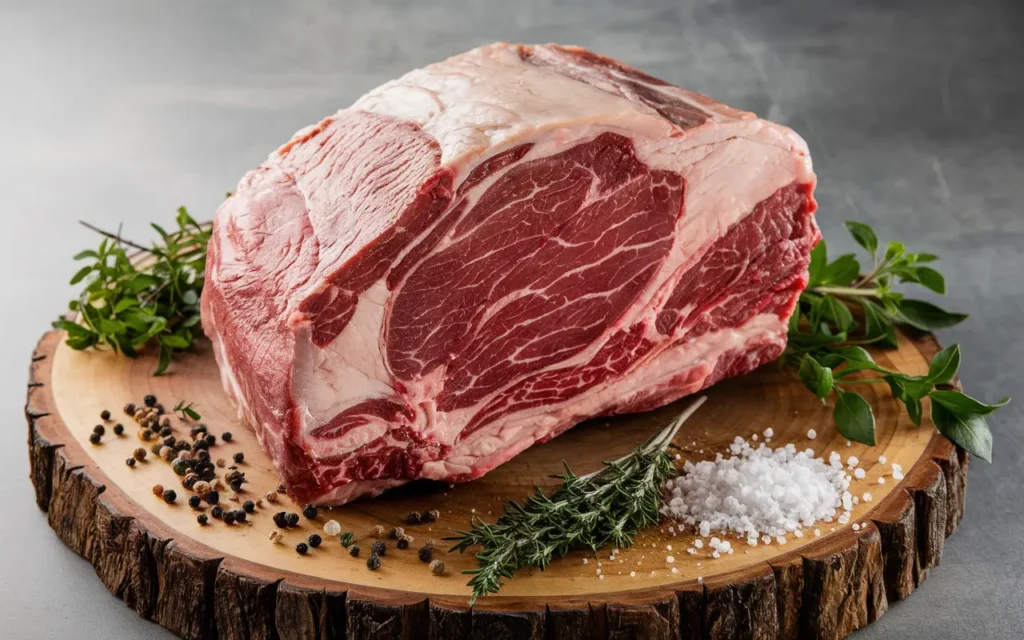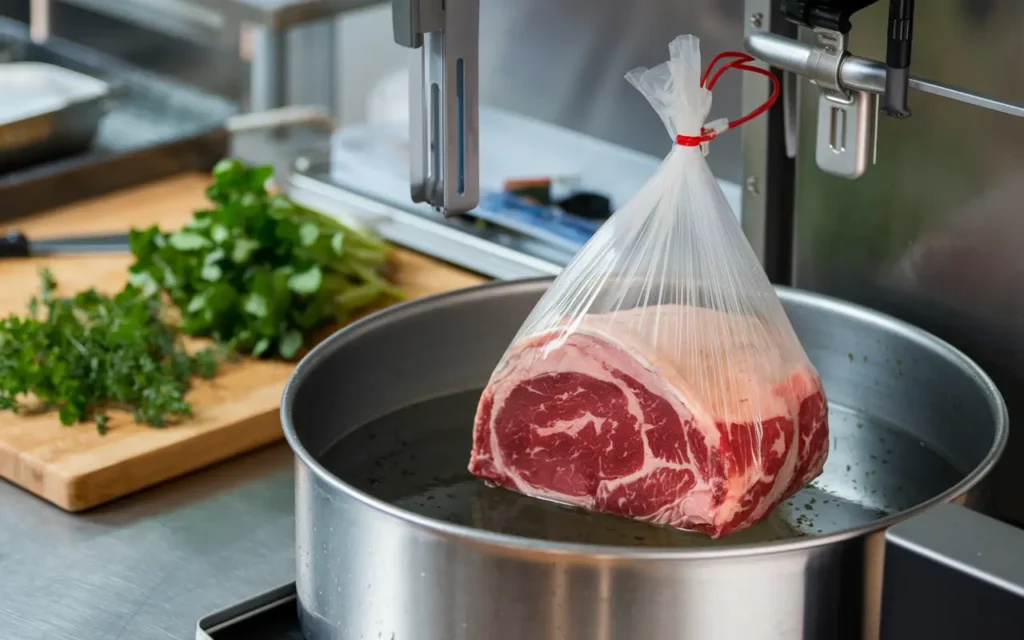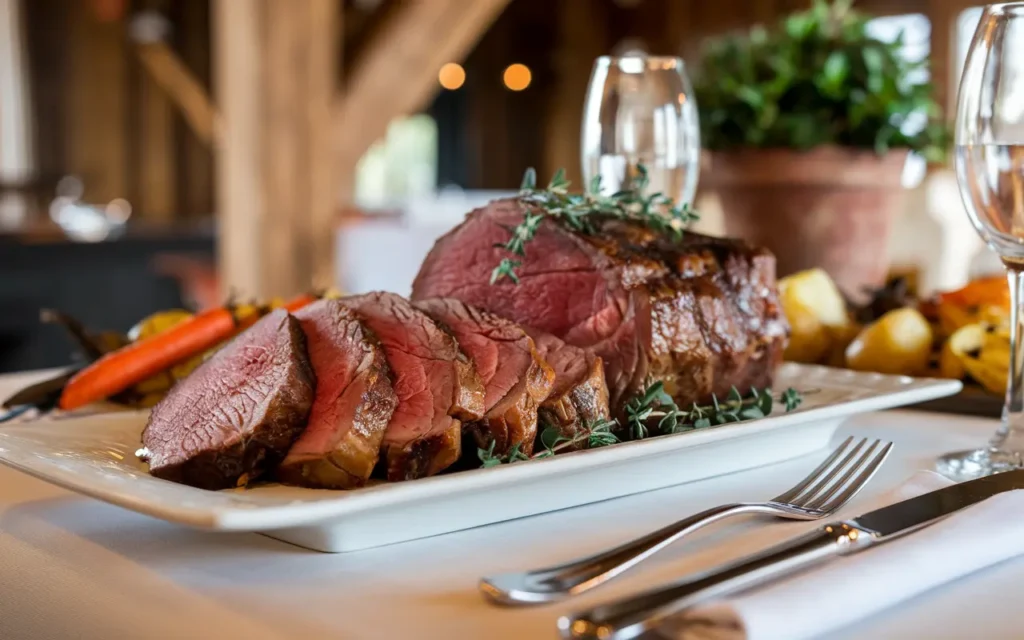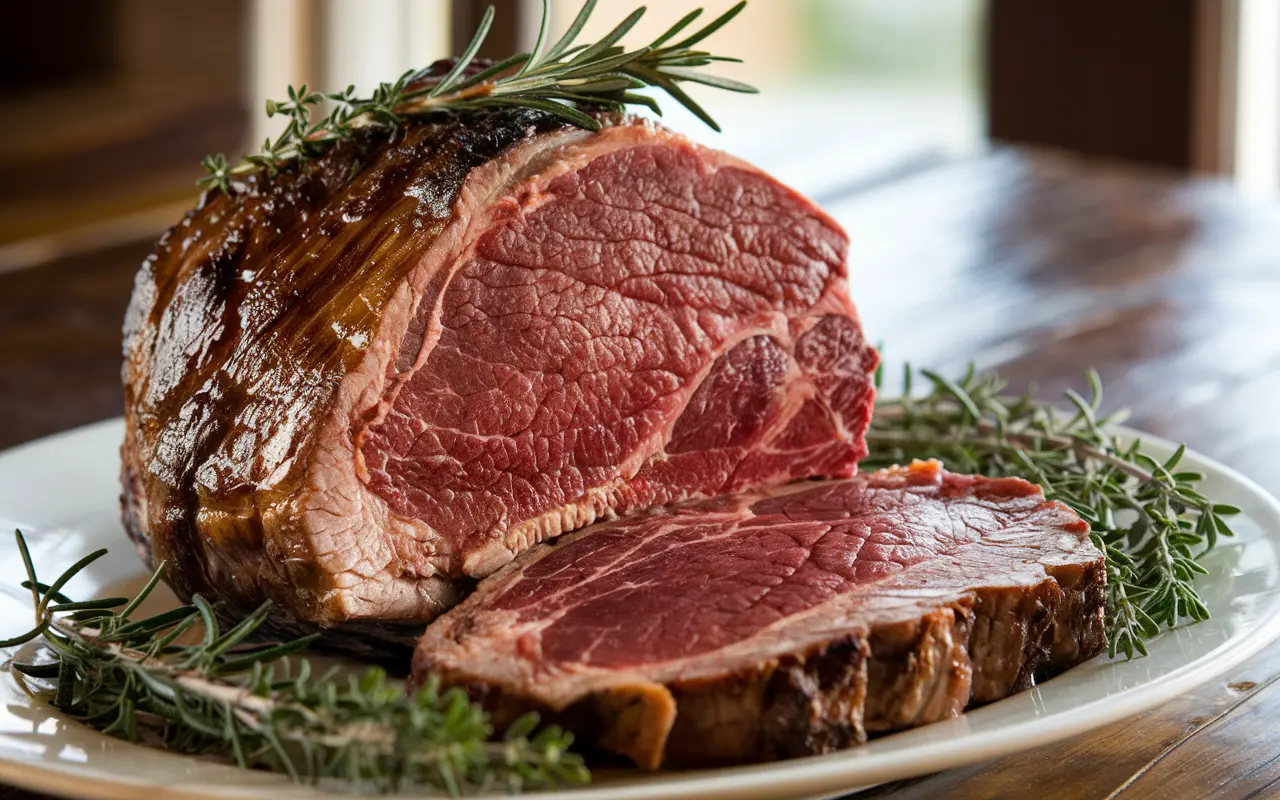Prime rib is the epitome of a luxurious dining experience, celebrated for its tender, juicy texture and rich flavor. But how do restaurants make prime rib so tender? The answer lies in expert meat selection, meticulous preparation, and advanced cooking techniques.
Understanding How Restaurants Make Prime Rib So Tender
Choosing the Right Cut for Tender Prime Rib
The journey to a tender prime rib begins with selecting high-quality meat. Restaurants often opt for:
- Prime-grade beef due to its superior marbling.
- Aging processes like dry aging, which intensify flavor, or wet aging to preserve tenderness.
- Ensuring the cut has optimal fat content to enhance juiciness.
Want to experiment with more budget-friendly options? Discover the secrets of Poor Man’s Prime Rib, a cost-effective alternative without sacrificing flavor.

Slow and Steady Wins the Race
Low and slow cooking is a hallmark of restaurant kitchens. It ensures:
- Even heat distribution to prevent overcooking.
- Retention of the meat’s natural juices, creating that signature tender bite.
For home chefs, you can also explore Cheaper Alternatives to Prime Rib to find other cuts that respond well to slow-cooking methods.
Restaurant Techniques for Making Prime Rib Tender
The Science of Seasoning and Resting
Seasoning and marination play pivotal roles in tenderness. Here’s how restaurants achieve the best results:
- Kosher salt creates a dry brine, breaking down protein fibers for tenderness.
- Herbs like rosemary and thyme add a fragrant complexity to the dish.
- Letting the meat rest after seasoning allows flavors to penetrate deeply.
Sous Vide: The Precision Cooking Gamechanger
Restaurants often use sous vide cooking to achieve precise results:
- Cooking the meat in a vacuum-sealed bag at a controlled temperature ensures consistent doneness.
- This method locks in the meat’s juices, preventing any loss of moisture.

Enhancing Tenderness in Prime Rib at Home
Butter Basting and Resting for Tender Prime Rib
Basting with melted butter infused with garlic and herbs:
- Keeps the meat moist during cooking.
- Adds a rich, luxurious flavor that enhances the dish.
Common Mistakes That Prevent Tender Prime Rib
After cooking, resting is crucial to retain juices:
- Allow the meat to sit for 20–30 minutes before carving.
- Slice against the grain to maintain a tender texture.
Learn more tips to perfect your carving technique by exploring recipes like Poor Man’s Prime Rib Roast.
Common Mistakes to Avoid
Avoid these common errors to ensure a perfect prime rib:
- Overcooking: Stick to a low temperature, especially for a slow roast.
- Skipping the resting step: Cutting the meat too soon releases its precious juices.
- Carving incorrectly: Always slice against the grain for a smoother texture.
FAQs: Answering Your Prime Rib Questions
What is the best temperature for prime rib?
200°F is ideal for slow roasting, while 135°F is recommended for medium-rare sous vide cooking.
How long should prime rib rest?
A minimum of 20 minutes ensures juices redistribute evenly.
Can prime rib be made on a budget?
Yes, cuts like chuck roast can mimic prime rib with the right preparation. Check out Cheaper Alternatives to Prime Rib for more ideas.
Conclusion
Crafting tender, restaurant-quality prime rib requires attention to detail and the use of proven techniques like slow roasting, sous vide cooking, and careful seasoning. By following these insights, you can bring the indulgent experience of a steakhouse into your home.
For more inspiration on transforming affordable cuts into gourmet dishes, visit Best Tasting Recipes.

Looking for more inspiration and recipes to elevate your cooking game? Follow Best Tasting Recipes on social media for daily tips, creative ideas, and delicious meals! Explore their vibrant community on Instagram to see mouth-watering food photography and recipe highlights. Don’t forget to connect on Facebook for exclusive updates, meal-planning advice, and engaging discussions with fellow food enthusiasts. Join the journey of making every meal unforgettable!.

